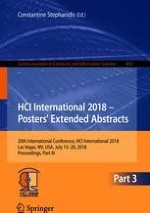2018 | OriginalPaper | Buchkapitel
Developing a Human Behavior Simulation System Based on Geometry Affordance
verfasst von : Yun Gil Lee
Erschienen in: HCI International 2018 – Posters' Extended Abstracts
Aktivieren Sie unsere intelligente Suche, um passende Fachinhalte oder Patente zu finden.
Wählen Sie Textabschnitte aus um mit Künstlicher Intelligenz passenden Patente zu finden. powered by
Markieren Sie Textabschnitte, um KI-gestützt weitere passende Inhalte zu finden. powered by
